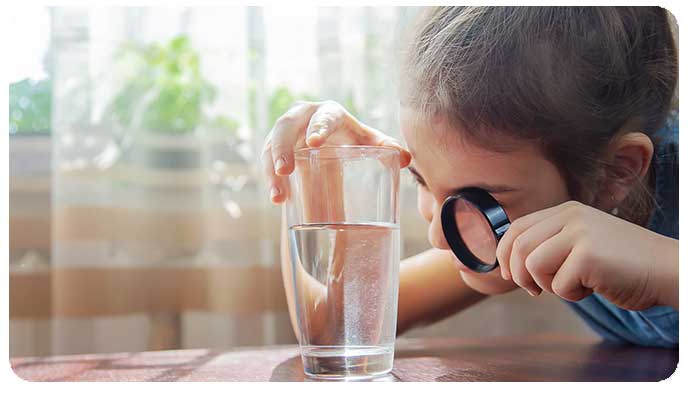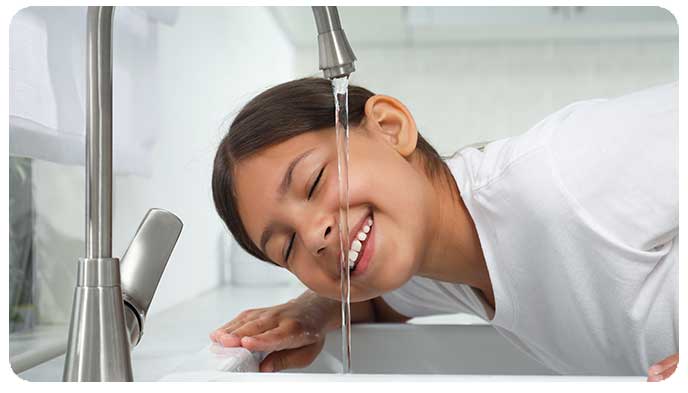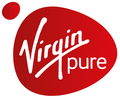Is distilled
water the same as filtered water? Is purified water more healthy than distilled
water? We take a look at the differences between filtered and distilled water.
It’s all about the process. Whether your
drinking water is distilled, purified, filtered or just comes straight from the
kitchen tap, it’s however that water’s been treated that makes the difference.
Here’s how:
What is filtered water?
Filtered water is usually the same as purified water in that
it’s been filtered to remove
water contaminants that aren’t naturally found in water. Activated charcoal
filters are used to remove contaminants such as chlorine. Chlorine is used by
the water treatment works to keep your supply free from bacteria as it travels
from the water plant to your property. Safe amounts of chlorine are used to
disinfect the UK’s drinking water, but some people can taste or smell the
chemical. If you live near your local water treatment works, you may also have
a higher level of chlorine in your water than you would if you lived further
away from it.
The UK’s Drinking Water Inspectorate (DWI) says that there
can be variations in the amount of chlorine present in different water
supplies. So if you don’t like the taste or smell of chlorine, they recommend
the following:
●Refrigerate your tap water in a sealed jug before
drinking, but throw it away after 24 hours and clean the jug regularly
●Use a water filter with activated carbon which will
remove the chlorine
Activated carbon absorbs chemicals. A carbon water filter
uses charcoal treated with oxygen to open up million tiny pores between the
carbon atoms. This allows adsorption and the removal of unwanted molecules in
the water that affect the taste and smell, such as chlorine, chemicals from
herbicides and pesticides, and VOCs (volatile organic compounds).

What is distilled water?
Distilled water means that it has been boiled, the steam has
been collected, and then the steam has cooled back down to return to its liquid
state. Distillation is the most thorough method of purification. So much so
that medical facilities and laboratories use it, but it’s not so commonly used
as drinking water as the distillation process removes all the naturally
occurring healthy minerals and electrolytes found in water. Filtered water will
retain all of these healthy, natural ingredients.
What other methods are used to filter water?
The Virgin Pure system uses a triple-filtration method as
part of its process to purify mains water. The activated carbon filter is the
third stage of the Virgin Pure filtration process. The first stage is a mesh
filter that traps particles of dirt that have entered your mains water supply.
Dirt and rust are usually picked up along the miles of pipework between the
treatment plant and your property. After this, a sediment filter removes
smaller particles. All of these filtration methods will also reduce the amount
of microplastics in your drinking water.
One of the UK authors of the most recent World Health
Organisation report on microplastics in drinking water said: ‘Tap water in the
UK contains between zero and 10 microplastic pieces in every litre.’ The Virgin
Pure system removes all particles larger than 0.6
microns from the mains water supply. The plastic particles in drinking water
found in the most definitive tests at the State University of New York in 2018
were larger than 75 microns.

What is purified water?
Purified water is simply water that’s undergone another
process, in addition to filtration, to remove impurities - such as ultraviolet
(UV) light treatment. In addition to the triple-filtration process, two further
processes in the Virgin Pure system ensure that your water is purified. The
pre-filter prevents scaly white flakes. It contains food-grade polyphosphate
crystals which separate calcium and magnesium. Therefore they can’t bond and
form white flakes. Even though the flakes are simply a crystallisation of
healthy minerals, it doesn’t taste nice to drink.
The UV lamp kills bacteria. Bacteria will begin to grow in
stored water once the chlorine has been removed. The water is exposed to the UV
light which is set to a bacteria-killing wavelength. UV purification adds
nothing to the water, produces no tastes or odours, and takes mere seconds to
be effective. It’s important to remember that bacteria can grow in water stored
in simple jug filters without any UV treatment. Bacteria can also grow in
stored bottled water, especially after it’s been opened and not refrigerated.
Is purified water healthier than tap water?
The DWI recommends the following actions:
●Only drink freshly drawn water from the cold water tap
directly off the water mains, usually the cold tap in your kitchen
●If you haven’t run any water for several hours, fill a
washing up bowl before drinking any tap water. Don’t drink water which may have
been standing for a long time in your pipes.
●Don’t drink or use the water from your bathroom taps
for cooking as it usually comes from a storage tank in the loft so won’t be as
fresh as from your kitchen tap
The DWI themselves recommend we filter our tap water to
improve it;s taste and smell, therefore it’s healthiness. The Virgin Pure
system leaves all the naturally occurring essential minerals in water that your
body needs, such as potassium, calcium and magnesium. Calcium forms healthy bones and teeth,
regulates muscular contractions and helps blood clot. Magnesium is important for about 300 metabolic
processes in our body, including heart and cardiovascular health, muscular
function and sugar balance. Potassium helps blood pressure, mineral balance, muscles, and nerve
system function.
Alternative purification methods used by water softeners or
reverse osmosis systems remove these healthy minerals. Water purified the
Virgin Pure way doesn’t cause any chemical reactions or PH changes. A decent
water purifier gets rid of anything in your tap water that shouldn’t be there,
leaving it healthier and tastier for you to drink.
Having purified water at home is just like having mineral
water on tap. Purifying your own water is far cheaper than buying lots of
bottled water, and healthier. According to research, bottled water can contain ‘a few hundred’ pieces of
microplastic. Tests revealed that 93% of bottled water shows 'some sign of
microplastic contamination'. There were twice as many plastic particles in
bottled water as tap water; and more particles in plastic bottles than in glass
bottles. Therefore, you’re far less likely to be ingesting microplastics if you
purify your own water than if you buy and drink bottled water.
But filtered and distilled are not the only two types of
water out there. Find out about the options and discover the pros
and cons of different water types.
Sources:
https://news.sky.com/story/microplastics-found-in...
Orb Media study, 2018dwi.gov.uk
britannica.com






